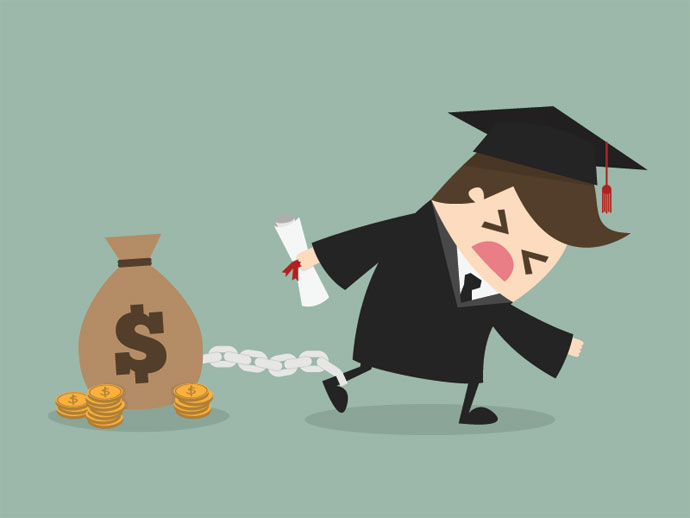7 Steps To Take Control Of Your Student Loans
Many recent graduates are eager to make their way into adult life. Starting a career, moving out of the dorms, good beer, and discretionary income are all things to look forward to as a recent graduate. However, as more and more young adults assume large levels of student loan debt, many recent graduates are finding themselves weighed down. Upon graduation, student loan repayment begins. Meaning, if you are among the 7 of 10 recent graduates with student loan debt, you will need to start making interest and principal payments on your student loans.
Before writing that first check, check out these steps you need to take to take control of your student loans:
1. Know your student loans.
Do you have federal or private student loans? How much do you owe on each student loan?
Odds are, you probably have at least a couple different student loans. You may even have private student loans from multiple lenders. Before your repayment begins, put together a spreadsheet with each student loan you have, the type of student loan (federal vs. private), the amount owed, and the interest rate.
Federal student loan information can be retrieved directly from the Department of Education website. Private student loan information can be found by logging into each of your private student loan accounts.
Knowing your student loans in an important step towards a smart repayment.
2. Sign up for automatic ACH payments.
These days, most student loans can be paid electronically via auto-pay. With auto-pay, you can make automatic ACH transfers from your checking account to your student loan lender. Auto-pay can help you avoid late payments and fines. Moreover, most student loan lenders offer a 0.25 percent discount for using auto-pay!
3. Pay the highest interest loans first.
As simple as this sounds, too often recent graduates don’t choose the correct loans to pay off first. In general, federal student loans will have lower interest rates in comparison to private student loans. You want to make sure that you are paying down your highest-rate loans first. By doing so, you will avoid excess interest and save yourself money. Not all student loan servicers automatically apply your payments to your highest-rate loans first. You might need to elect this preference!
4. Refinance to a lower interest rate.
Student loan refinance is a new and hot topic. Student loan refinance is the process of refinancing your old student loans into one new loan with a new private student loan lender. You can refinance both private and federal student loans. Student loan refinance rates start at 1.92 percent for qualified borrowers. So if you find yourself paying more than 10 percent on those private student loans, know that refinancing is an option. Even if you save just 1 percent on your student loans, that 1 percent could add up to thousands of dollars over the life of the loan. In most cases, there are no fees for refinancing student loans. Having a co-signer can dramatically improve your chances of qualifying for student loan refinance. Make sure that you shop around too, as there are plenty of student loan refinance lenders on the market. Each lender may offer a different rate and set of terms!
5. Consider your federal student loan benefits.
The vast majority of student loan borrowers have federal student loans. Federal student loans come with a number of great benefits to help recent graduates. Income-based repayment ties your monthly student loan payment to your income. If you find yourself with a lot of student loan debt, and not that much income, income-based repayment could be a great tool.
6. Make a budget.
Budgeting may be a new topic for many college graduates. But now that you’ve started collecting a real paycheck, you are going to need to create a budget to fit your financial objectives. If at all possible, try to factor in additional student loan payments into your budget. By paying down principal early, you will save yourself a lot of money over the long term. Avoiding interest is an excellent way to get yourself out of debt.
7. Relax.
With 7 out of 10 graduates are now carrying some form of student loan debt, know you are not alone. With an average balance of $30,000, student loans are a problem for the majority of your classmates. I know that student loan debt can seem overwhelming, just know that it is possible to beat your student loan debt and still enjoy your new life as a college graduate.
Nate Matherson is the Co-Founder and CEO at LendEDU. LendEDU is a marketplace for student loans and student loan refinance. With one short application, student loan borrowers can get quotes from 9 of the leading student loan providers.










































